3
�
Stationary and Related Stochastic
Processes
Sample Function Properties and Their Applications
Harald Cramér
M. R. Leadbetter
4
�
Copyright
Copyright © 1967 by John Wiley & Sons, Inc.
Copyright © renewed 1995 by M. R. Leadbetter and the Estate of Harald
Cramér
All rights reserved.
Bibliographical Note
This Dover edition, first published in 2004, is an unabridged republication
of the work originally published in 1967 by John Wiley & Sons, Inc. New
York.
9780486153353
Manufactured in the United States of America
Dover Publications, Inc., 31 East 2nd Street, Mineola, N.Y 11501
5
�
Preface
This book is an outcome of a collaboration between the authors, under
the auspices of the Research Triangle Institute (RTI) of Durham, North
Carolina, through contracts with the National Aeronautics and Space
Administration.
Starting in 1962, our joint work was originally concerned with certain
reliability problems, which were found to be intimately connected with the
properties of the trajectories (or sample functions) of stationary stochastic
processes. After we had reached some preliminary results, it was suggested
by the Senior Scientific Advisory Committee of the RTI that we should
follow up our work and write a joint monograph on these and some related
problems.
When trying to work out a possible programme for such a book, we
soon came to the conclusion that the most desirable plan would be to
include an account of the general theory of stationary processes, with
special emphasis on the properties of their sample functions. It is well
known that some of these properties are important also in other fields of
application, such as communication engineering. Accordingly, we decided
to make the discussion of the sample functions sufficiently broad to cover
as many as possible of the properties relevant for such applications.
The book is written for a reader assumed to have a working knowledge
of the basic features of modern probability theory. However, some
fundamental concepts and propositions of this theory are briefly reviewed
in an introductory chapter (Chapter 2).
The foundations of the general theory of stochastic processes are then
6
�
developed, with special emphasis on processes with a continuous-time
parameter (Chapter 3). The analytic properties of the trajectories (or
sample functions), such as continuity, differentiability etc., are studied in
some detail (Chapter 4). The general theory is then applied to certain
classes of processes important as tools for the study of stationary processes
(Chapters 5 and 6).
The main part of the book is concerned with the theory and applications
of stationary processes. Their spectral representation is deduced by
methods of Hilbert space geometry introduced in a previous chapter,
analytic properties of the sample functions are studied, and proofs of some
basic ergodic theorems are given (Chapter 7). On the other hand, problems
of prediction and filtering, of which excellent accounts are available
elsewhere, are only briefly discussed. Certain generalizations are treated in
a separate chapter (Chapter 8).
In the important case of normal (Gaussian) stationary processes, the
conditions for continuity, etc., of the sample functions take a particularly
simple form; this form is thoroughly studied in Chapter 9. For this class of
processes, the problem of the time distribution of the intersections between
a sample function and a given constant level, or a given curve, has recently
attracted a considerable interest. Problems of this type are extensively
discussed, and this is believed to be the first account in book form of much
recent work by American, Soviet Russian, and other authors. Several
results believed to be new are given in this connection (Chapters 10 to 13).
Various applications to problems of frequency detection and reliability are
given (Chapters 14 to 15).
We have endeavoured to give complete and rigorous mathematical
proofs of all results judged to be important from the point of view of the
applications. At the same time an attempt has been made to reduce the
mathematical difficulties involved as far as possible.
Our most sincere thanks are due to the National Aeronautics and Space
Administration and to the Research Triangle Institute for their support of
our joint work, to Professors S. S. Wilks and R. F. Drenick for
encouraging us to write this book, and to Dr. J. D. Cryer for his
painstaking and critical reading of the entire manuscript.
As will be seen, much of the content of the later chapters leans heavily
on the pioneering work of S. O. Rice. It is a pleasure to express our
gratitude to Dr. Rice and Dr. David Slepian for very helpful and
7
�
stimulating conversations.
Finally, we owe a very special debt of gratitude to Dr. Gertrude M. Cox.
It was largely through the efforts of Dr. Cox that our collaboration became
possible, and we very much appreciated her continued interest and
enthusiasm throughout the entire project.
H. C., M. R. L.
July 1966
8
�
Table of Contents
Title Page
Copyright Page
Preface
CHAPTER 1 - Empirical Background
CHAPTER 2 - Some Fundamental Concepts and Results of
Mathematical Probability Theory
CHAPTER 3 - Foundations of the Theory of Stochastic Processes
CHAPTER 4 - Analytic Properties of Sample Functions
CHAPTER 5 - Processes with Finite Second-Order Moments
CHAPTER 6 - Processes with Orthogonal Increments
CHAPTER 7 - Stationary Processes
CHAPTER 8 - Generalizations
CHAPTER 9 - Analytic Properties of the Sample Functions of
Normal Processes
CHAPTER 10 - “Crossing” Problems and Related Topics
CHAPTER 11 - Properties of Streams of Crossings
CHAPTER 12 - Limit Theorems for Crossings
CHAPTER 13 - Nonstationary Normal Processes Curve Crossing
Problems
CHAPTER 14 - Frequency Detection and Related Topics
CHAPTER 15 - Some Aspects of the Reliability of Linear Systems
References
Index
9
�
CHAPTER 1
Empirical Background
An important motivation for studying any branch of probability theory
arises from its application to practical situations involving random
phenomena. That is, the theory provides a mathematical description, or
model for, say, a given experiment in which random influences are
involved. Such a model provides a basis for making statistical decisions
concerning possible courses of action resulting from the experiment. The
situation is thus closely akin to that in many other fields of application of
mathematics such as, for example, Euclidean geometry, where we have an
abstract theory on the one hand and important practical applications on
the other.
In this book we shall be concerned primarily with the probabilistic
structure of certain types of stochastic processes, or random functions of a
variable which, in most practical applications, will signify time. Hence, it
is appropriate that we begin with a general discussion of the empirical
probability background concerning practical situations which lead to the
consideration of such processes.
1.1 RANDOM EXPERIMENTS AND RANDOM
VARIABLES
In Chapter 2 we shall be concerned with a proper mathematical foundation
for probability theory. It is appropriate here, however, to consider the
intuitive concepts of the theory.
The practical situation with which we are concerned involves a random
experiment. That is, we consider an experiment E, the outcome of which is
determined, at least partially, by some random mechanism whose effect we
cannot predict exactly in advance. The word “experiment” is here used in a
broad sense; we may be concerned with n tosses of a coin, a measurement
of the height of a random individual in a population, or of the lifetime of a
light bulb, and so on.
In conducting a random experiment, one
is
interested
in
the
10
�
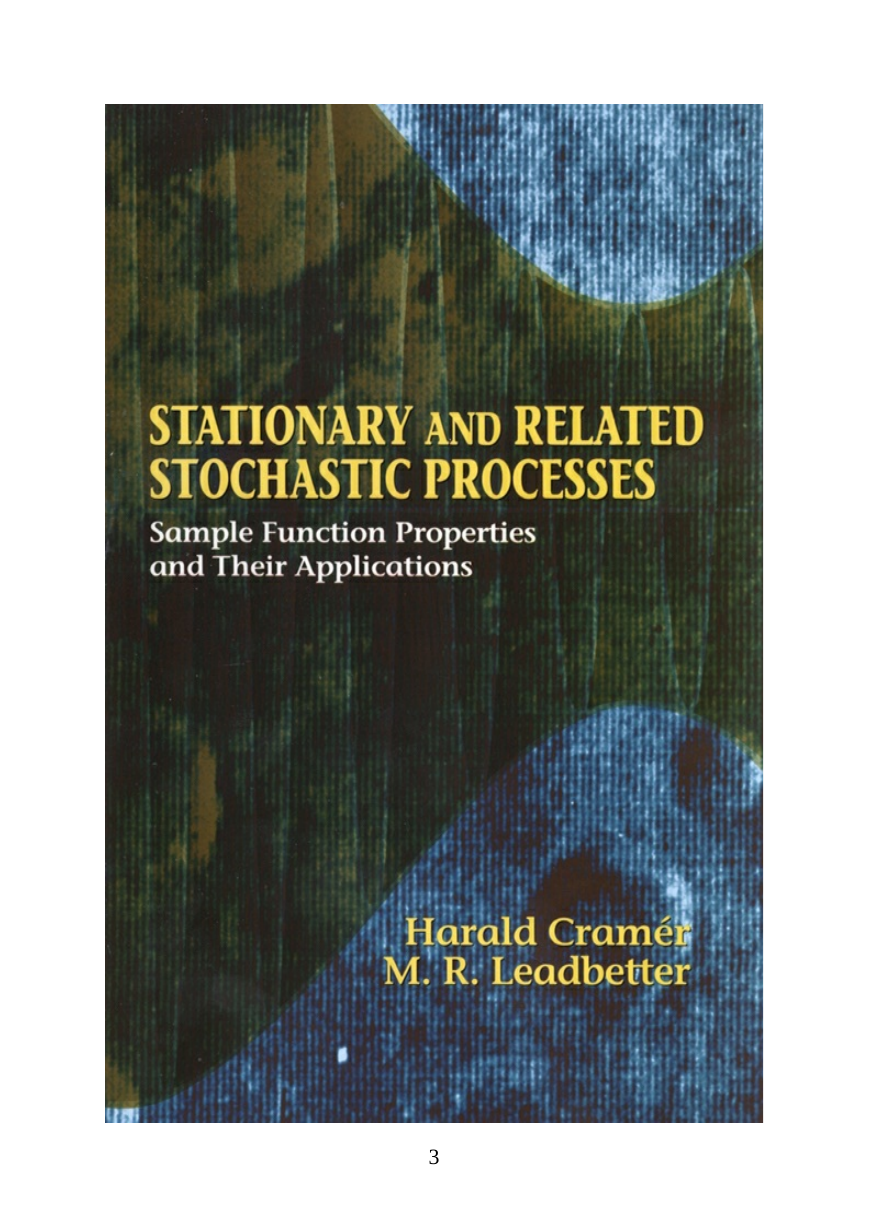
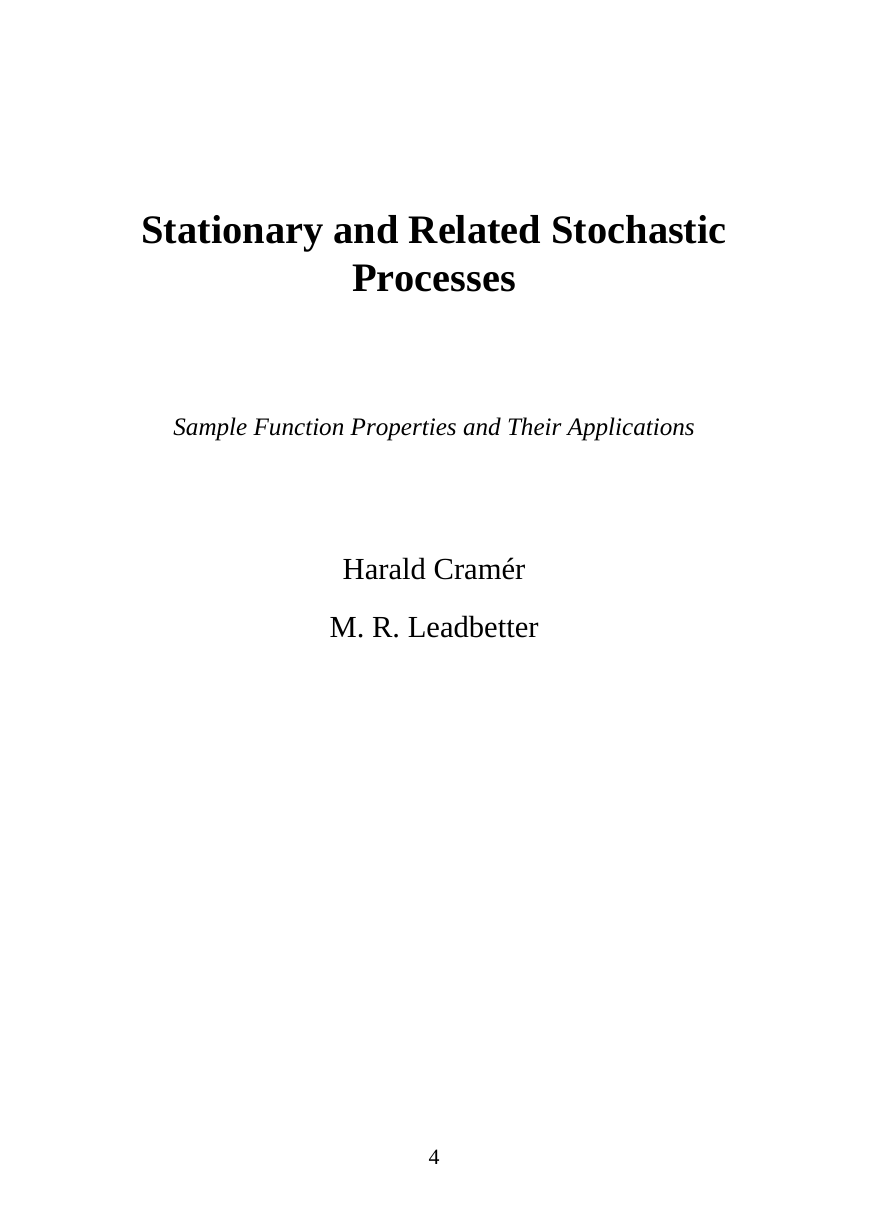
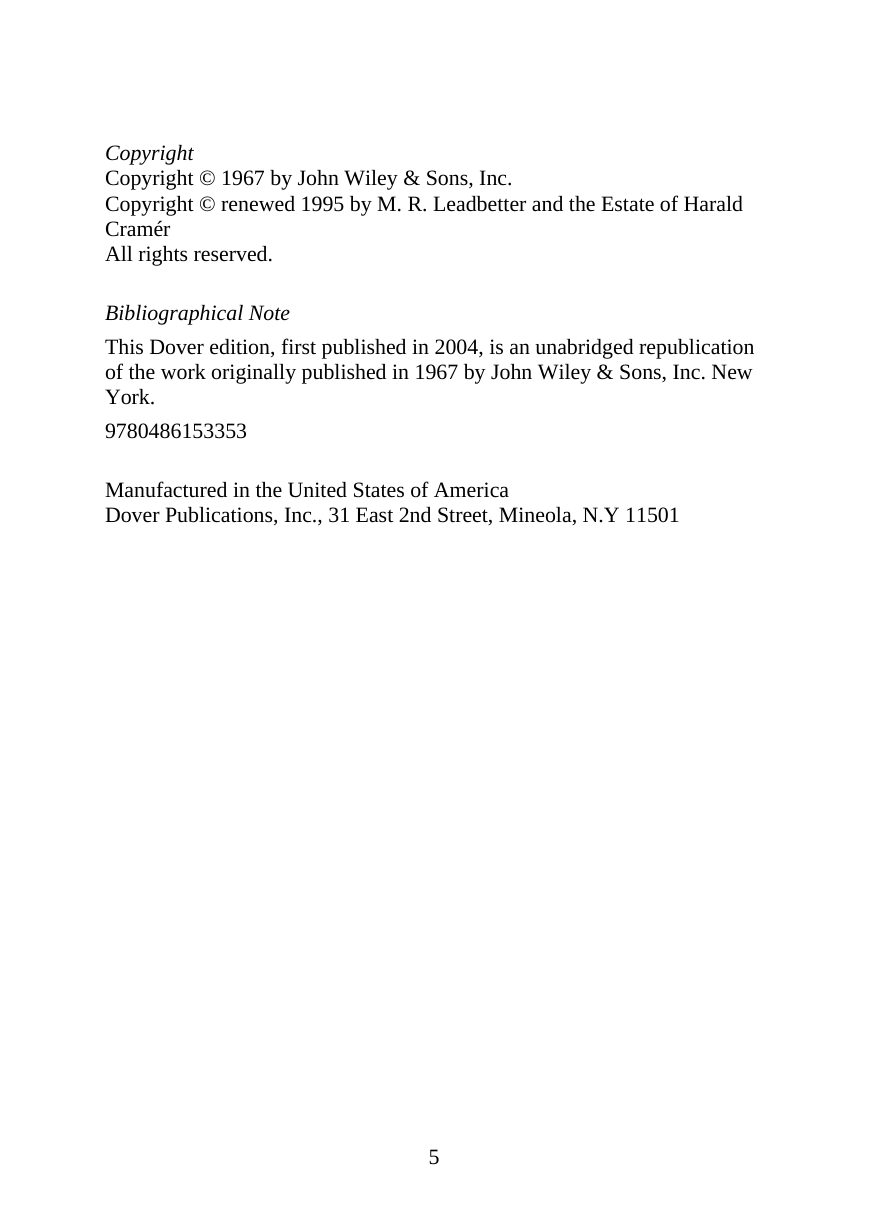
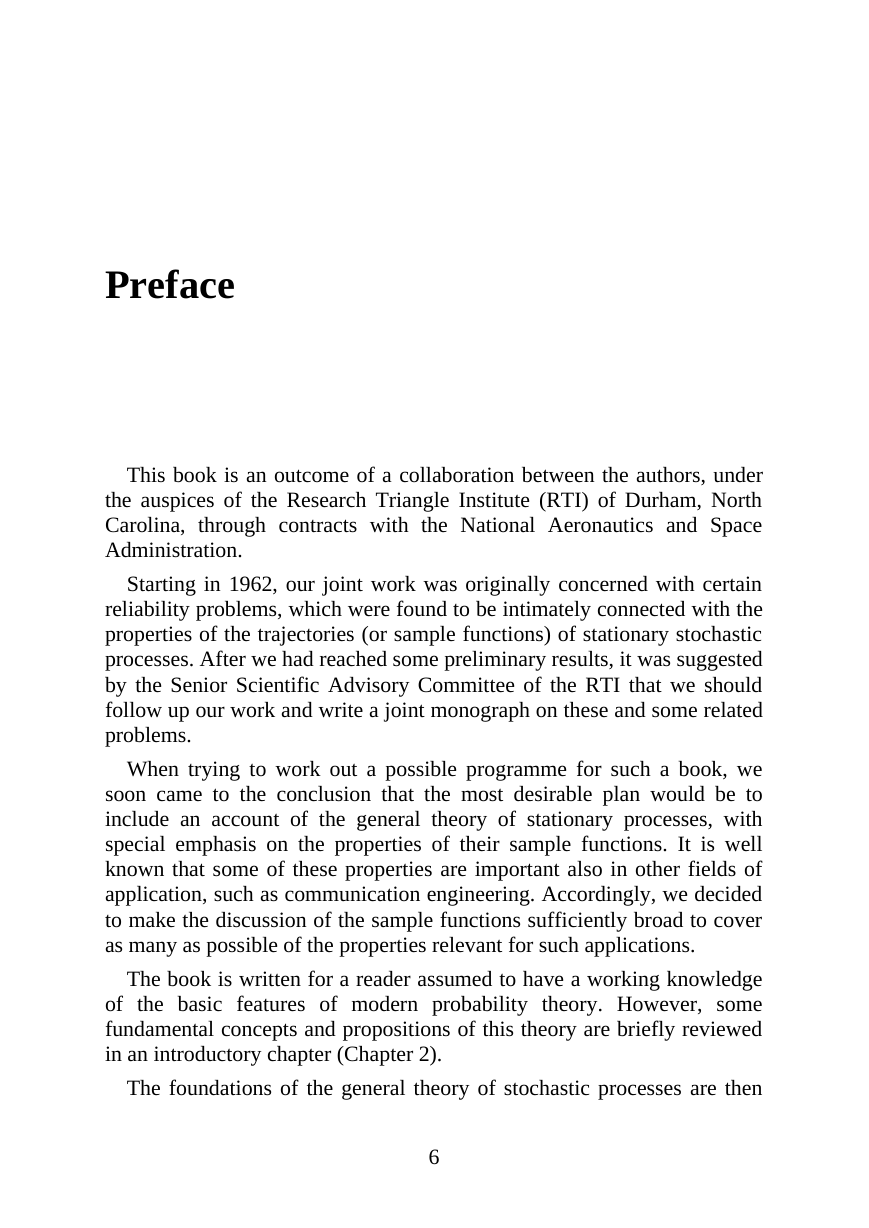
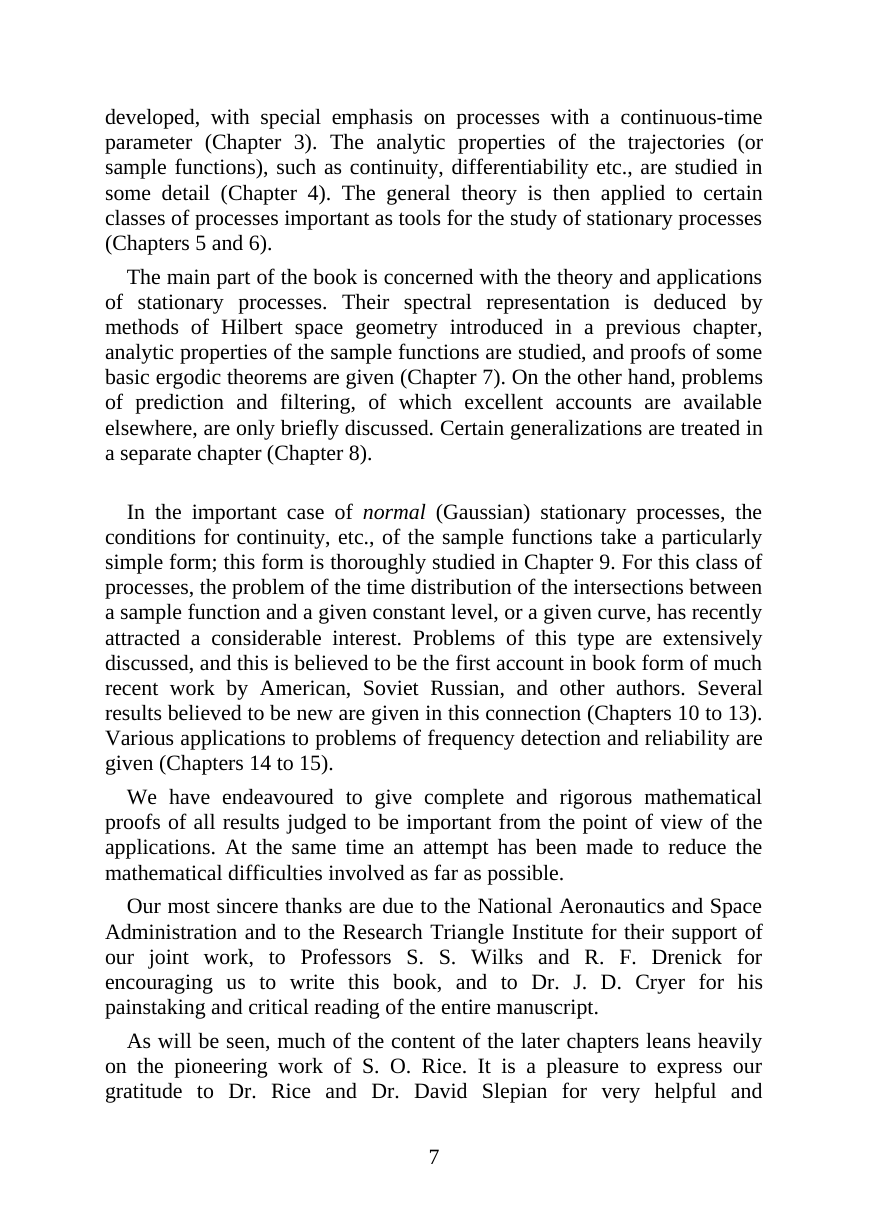
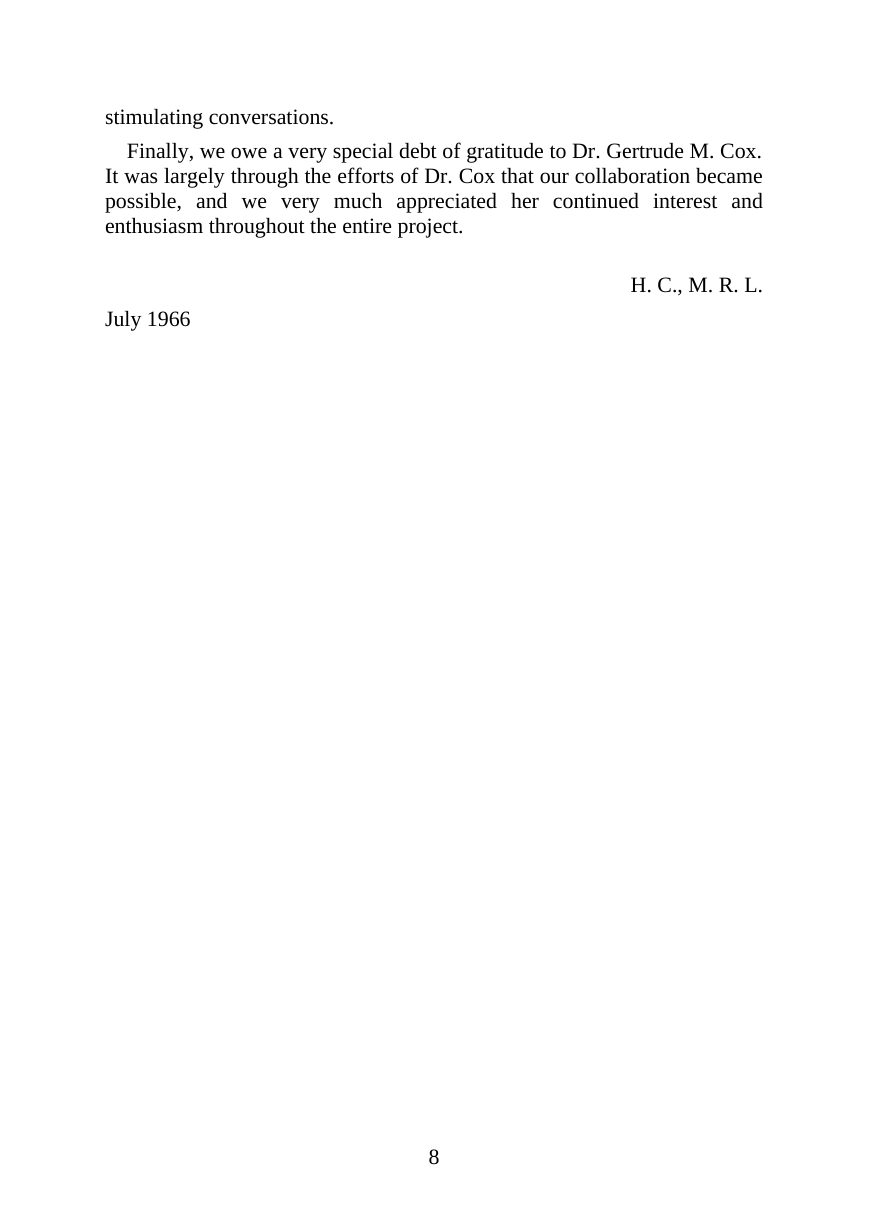
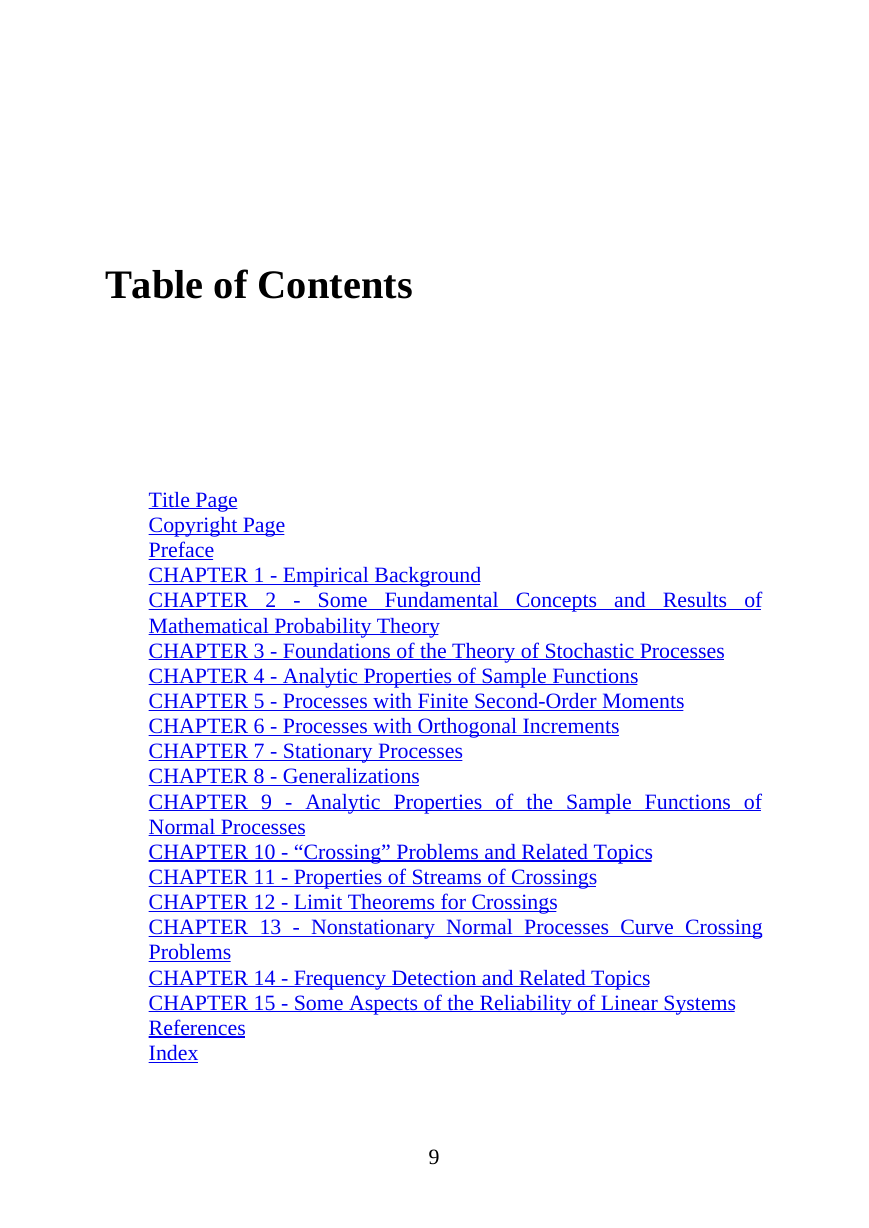
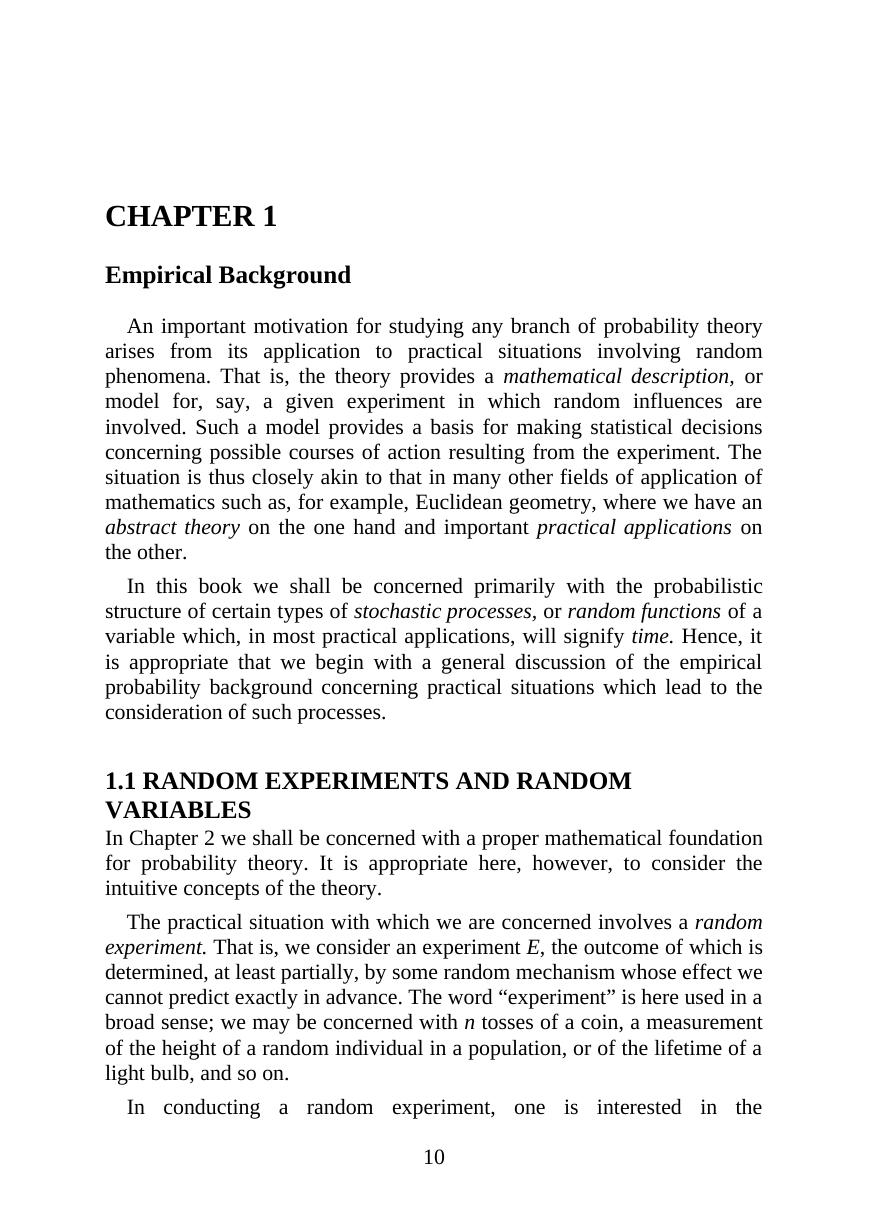








 2023年江西萍乡中考道德与法治真题及答案.doc
2023年江西萍乡中考道德与法治真题及答案.doc 2012年重庆南川中考生物真题及答案.doc
2012年重庆南川中考生物真题及答案.doc 2013年江西师范大学地理学综合及文艺理论基础考研真题.doc
2013年江西师范大学地理学综合及文艺理论基础考研真题.doc 2020年四川甘孜小升初语文真题及答案I卷.doc
2020年四川甘孜小升初语文真题及答案I卷.doc 2020年注册岩土工程师专业基础考试真题及答案.doc
2020年注册岩土工程师专业基础考试真题及答案.doc 2023-2024学年福建省厦门市九年级上学期数学月考试题及答案.doc
2023-2024学年福建省厦门市九年级上学期数学月考试题及答案.doc 2021-2022学年辽宁省沈阳市大东区九年级上学期语文期末试题及答案.doc
2021-2022学年辽宁省沈阳市大东区九年级上学期语文期末试题及答案.doc 2022-2023学年北京东城区初三第一学期物理期末试卷及答案.doc
2022-2023学年北京东城区初三第一学期物理期末试卷及答案.doc 2018上半年江西教师资格初中地理学科知识与教学能力真题及答案.doc
2018上半年江西教师资格初中地理学科知识与教学能力真题及答案.doc 2012年河北国家公务员申论考试真题及答案-省级.doc
2012年河北国家公务员申论考试真题及答案-省级.doc 2020-2021学年江苏省扬州市江都区邵樊片九年级上学期数学第一次质量检测试题及答案.doc
2020-2021学年江苏省扬州市江都区邵樊片九年级上学期数学第一次质量检测试题及答案.doc 2022下半年黑龙江教师资格证中学综合素质真题及答案.doc
2022下半年黑龙江教师资格证中学综合素质真题及答案.doc